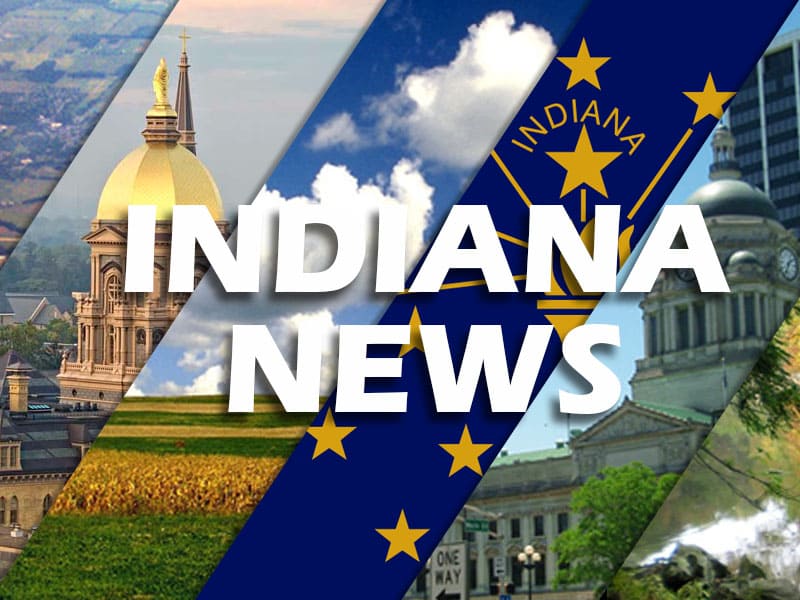Indiana Secretary of State Diego Morales’ claim that more than 90% of eligible Hoosiers are registered to vote in the November election is being questioned by voter advocacy groups.
In a press release issued last week, Morales said that more than 4.7 million Hoosiers – 90.7% of those eligible – are registered to vote. He also touted his administration’s work to promote voter registration by having “blanketed the state with voter registration efforts” and encouraged eligible Hoosiers to register.
However, nonprofit voter advocacy organizations say the true number of eligible voters in Indiana who are registered is much lower.
“That number is inflated because the state does a horrible job of routine (voter) list maintenance,” Julie Vaughn, executive director of Common Cause Indiana, said. “It’s hard to say what the number is because we don’t know how much of that (on the voter rolls) are bad names, are people who have moved who should have been deleted.”
The 2023 Indiana Civic Health Index surveyed Hoosiers and found 66.5% of them were registered to vote in 2022, ranking Indiana 40th in the country. Moreover, the index pointed to an analysis by the Tufts University Center for Information and Research on Civil Learning and Engagement for the 2022 midterm election that put Indiana sixth from the bottom in getting 18- to 24-year-olds registered to vote.
Also, the Civic Health Index stated secretary of state’s January 2024 report of registered voters is an “over-statement” because the voter rolls contain individuals who have died, moved out-of-state or relocated within the state and did not have their name deleted in their old precinct.
Lindsey Eaton, spokeswoman for the secretary of state, disputed the contention that the registration percentage number is incorrect.
“We would not agree with that assessment that the figure is inflated,” Eaton said in an email.
The day the press release was issued, Indiana’s voter rolls included both active and inactive voters, according to Eaton. Inactive voters can still cast a ballot if they “verbally confirm the address on their registration,” she said, although she did not specify whether the inactive voters would need to provide confirmation by the registration deadline or could do so after.
To calculate the percentage of eligible Hoosiers registered, the secretary of state divided the current number of voter registrations in Indiana, 4.78 million, by the state’s 2023 eligible voting population from the U.S. Census, 5.27 million, Eaton said. The result is 90.7%.
“As the close of voter registration for the upcoming General Election approaches, the (secretary of state’s) office wanted to point out the positive trend in voter registration and interest in the election,” Eaton said in an email. “Robust voter registration activity is ongoing and the actual figures are changing every day.”
Cleaning the voter rolls
Kelly Klevitsky, Indianapolis team leader for the national nonpartisan civic engagement nonprofit, HeadCount, has trouble believing more than 90% of Indiana’s voters are registered. The number seems “quite high,” she said, based on what she has seen this year through her voting promotion work and on the state’s history of low voter registration and turnout stats.
”It’s great to hear that it’s 90%,” Klevitsky said. “It’s just quite a jump from the numbers in the past that I’ve been made aware of.”
During the 2020 presidential election, 69.3% of Hoosiers were registered to vote and 61.0% voted, according to the 2023 Civic Health Index. Those numbers put Indiana among the bottom of all states for registration and turnout, 39th and 46th place, respectively.
To determine the true number of registered voters, Vaughn said, Indiana must clean the “dead weight” from its voter registration lists. However, she cautioned, the process for removing names from the rolls must be done legally.
Two times in recent years, Indiana has been sued for attempting to purge its registration lists using what Vaughn described as “second-hand information.”
In 2018, the federal courts ruled the state was violating the National Voter Registration Act by employing a faulty matching system to identify voters who potentially were registered in more than one state and then removing those voters from the rolls without notifying them.
The Indiana General Assembly had required officials to use the Interstate Voter Registration Crosscheck Program to spot voters who possibly had multiple registrations. According to court documents, Crosscheck was very unreliable with one study by researchers from Stanford, Harvard, the University of Pennsylvania and Microsoft finding the system incorrectly flagged names as possible double voters more than 99% of the time.
In response to the court’s ruling, the Indiana legislature amended the law in 2020 to replace Crosscheck with the Indiana Data Enhancement Association. The result, federal courts found, was “continued inconsistency with the NVRA.”
“The state needs to get into the routine of doing this regularly,” Vaughn said of cleaning the voter rolls, “but they’ve sort of passed on the responsibility to counties and counties just have other things that they want to spend money on and voter list maintenance doesn’t seem to be high on their list of priorities.”
According to Eaton, the state has spent the last decade cleaning the voter rolls.
“Over the past 10 years, the state of Indiana has been conducting a bi-annual voter list maintenance program to identify duplicate and obsolete registrations on the rolls (voters moved, died, etc.) and initiate the federally approved process to deactivate those registrations,” Eaton said. “Removing a duplicate or obsolete voter registration does not equate to make an actual voter ineligible to vote in an election.”
Excitement brewing for Election Day
Klevitsky and her team will have worked 50 different concerts and community events, primarily in Indianapolis, between Jan. 1 and Nov. 5. The HeadCount crew attends festivals and music performances where they offer to help attendees register to vote or check their voter registration status.
Once the Oct. 7 registration deadline passes, Klevitsky said HeadCount will pivot to helping people get prepared to vote. The organization will help Hoosiers find their polling places, learn where to go for information on the candidates and tell them the last day they can request a mail-in ballot.
Klevitsky said she and her team have been busier than in previous years. Many people are happy to see the HeadCount volunteers at concerts and other events, she said, and they seem to be more motivated to vote. The individuals who are not interested in the election, she said, will be more likely roused by having conversations with friends and family, rather than speaking to a stranger about voting.
For those who are uncertain about whether they want to vote, Klevitsky encourages them to at least get their names on the voter rolls.
“What I always like to remind folks is if you’re not registered, you can’t vote,” Klevitsky said. “So, if you change your mind after the deadline to register and decide you do want to vote, you kind of missed your chance, so you might as well leave all your options open and make sure you’re registered. So, you can use those last 30 days between registration and the actual election to continue to make your decisions and make up your mind.”
To register to vote
Hoosiers who are U.S. citizens and will be 18 years or older on Nov. 5 can register to vote – or check their voter registration – by visiting the Indiana secretary of state’s voter portal.
Marilyn Odendahl wrote this article for The Indiana Citizen.

